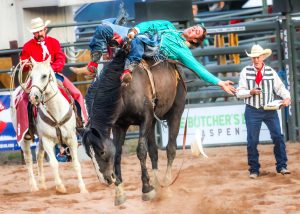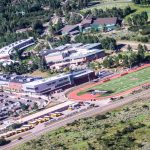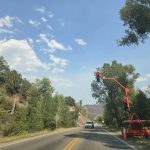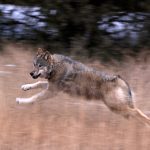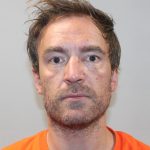Chris Hillman looks back, but only if he has to

ALL |
ASPEN Back when the Byrds were recording songs that would become rock n roll classics the folk-rock gem Turn, Turn, Turn, the psychedelic Eight Miles High, the jangling and touching The Bells of Rhymney and numerous takes on Bob Dylans works the natural inclination was to live in the moment. The oldest of the Byrds were in their mid-20s, enjoying both the act of artistic creation and the stardom that comes with it, and not looking to the future. Rock music itself was young enough that no one had a clue if the form would even stand the test of time, if those vinyl platters would mean anything a decade later.At the time, you didnt look beyond that moment, said Chris Hillman, the Byrds bassist. You didnt wonder if it would still be special in 10 years. Who knew?But there was one person in the Byrds camp who had his ear turned to the horizon. Jim Dickson, the bands manager, who wrangled Mr. Tambourine Man the bands first Dylan cover out of Dylan, advised the Byrds to think of posterity as they recorded.He told us, one thing youve got to learn is how to make something youll be proud of 40 years later: Dont go for the lightweight, fluffy, girl-boy stuff, recalled Hillman. Better advice Ive never heard.But even Hillman wasnt aware of just how much weight those words carried. This week, Bruce Springsteen released Working on a Dream, an album that is earning great accolades. At 59, the Boss has mostly set his musical course rockers with the E Street Band about the Jersey Shore, populist acoustic tunes sympathizing with the common man and you figure hes done absorbing new influences. But Springsteen has had one of his early influences at the forefront of his mind lately, and several tracks from Working on a Dream draw heavily on the Byrds. As Rolling Stone put it in a five-star review of the album, the jagged, sitarlike guitars on Life Itself are pure Eight Miles High, as are the close vocal harmonies on the tough little rocker What Love Can Do.Springsteen is hardly the first musician to pay close attention to the signature sound of the Byrds: Roger McGuinns 12-string guitar, the harmony singing of McGuinn, David Crosby and Gene Clark, the innovative mix of folk and rock. Also this week came the release of Ready for the Flood, by former Jayhawks Mark Olson and Gary Louris, which strongly echoes the Byrds not on two tracks, but from beginning to end. Tom Petty has never been reticent in his admiration for the Byrds, and for good reason: No one would have fallen for the idea that he was anything but a direct descendant of the band.Tom Pettys American Girl when that came out, Roger [McGuinn] heard it on the radio and asked, When did we record that? said Hillman.Hillman is proud of that legacy. We made an amazing musical path for others to follow, he said. Our batting stats, as far as song selection, was pretty good. Even as a listener, I can look back and say, yeah, we stumbled onto something. Im not patting myself on the back I was just the bass player.At 64, Hillman is still living in the moment; he would rather focus on his life now light on travel, heavy on family and acoustic music than on past glories. The night before we spoke, he had been at an industry event at Whisky a Go Go, the famed club on Los Angeles Sunset Boulevard where the Byrds began to take flight. It was his first time in the room since 1971, when he played there as a member of the Flying Burrito Brothers, the country-rock group he formed with fellow former Byrd, Gram Parsons. Hillman was drawn by the prospect of seeing Hugh Masakela, the South African trumpeter who had contributed to So You Want to be a Rock, which had been co-written by Hillman. Masakela and Hillman ended up jamming on Eight Miles High that night.It was crowded, changed, said Hillman of the club. Theres no sacred ground in Los Angeles. You have some memory, a mindset of a place. What did Thomas Wolfe say? You can never go home again.Hillman said revisiting the club, and seeing old acquaintances Whoever was still walking and talking from that period, 1964-84, was there evoked pleasant memories. But there also seems to be some distaste for those who looked as if they had never left the Whisky. Some people you saw dressed the same, clinging to the same ways. Which I guess is OK. But Ive pretty much moved on. Normally, I wouldnt have gone. But when I heard Masakela was coming, I said sure, whatever you want me to do, said Hillman, whose admiration for the trumpeter extends back to a Byrds tour of South Africa, which Masakela warned them not to do. The tour was a disaster, and the Byrds nearly landed in jail for speaking out against the apartheid regime.Hillman wasted no time moving on musically after leaving the Byrds. In 1969, with McGuinn the only original band member left, Hillman and Parsons left to form the Flying Burrito Brothers. Hillman put in time in Stephen Stills Manassas; joined J.D. Souther and former Buffalo Springfielder Richie Furay in the Souther-Hillman-Furay Band, made some solo albums, and regrouped with former Byrd mates McGuinn and Clark. All were fairly short-term projects.The relationship that has endured is with Berkeley native Herb Pedersen. Though the two had met in 1963, Hillman and Pedersen didnt develop a musical relationship until the mid-80s, when they formed the Desert Rose Band. The groups nine-year run yielded six albums, a handful of singles that made the country charts, and a brief reunion tour last summer that played a date at Copper Mountain.Desert Rose also spawned an ongoing partnership between its two leaders. Hillman and Pedersen made a pair of albums together, and joined up with brothers Tony and Larry Rice to form a quartet that only played eight live gigs, but left behind three excellent albums. (Pedersens other credits include work with Emmylou Harris, Jackson Browne and John Denver, and replacing Jerry Garcia in the banjo slot in the bluegrass group Old & In the Way.)The lions share of music Hillman has made over the last 15 years has been acoustic. When he performs in a duo with Pedersen on Saturday at the Wheeler Opera House, it will be all unplugged with Hillman on a Chris Hillman model Martin guitar, which made its debut this month. (John McEuen, banjoist/fiddler of the Nitty Gritty Dirt Band, will open with a solo set, and will join the duo onstage.)I enjoy the acoustic so much better because its challenging, said Hillman. Its just the two of us, but we manage to create such a big environment. Ill keep doing it till theres not an audience.Playing unplugged is, in fact, a return to Hillmans roots. Turns out his original plan was not to be a rock n roll star, but a bluegrass picker, and one with a taste for the rural, Southern roots of the music.A native of the San Diego area, Hillman discovered folk music through his older sister. He devoted himself to the mandolin and, as a teenager, joined his first band, the Scottsville Squirrel Barkers. When the Barkers disbanded, Hillman accepted an invitation to join the preeminent California bluegrass group of the time, the Golden State Boys real blue-collar guys, playing, speaking traditional bluegrass in hillbilly bars, said Hillman. That was my window on authenticity.That history didnt give Hillman much of a feel for rock n roll which made him an ideal fit in the Byrds. We had no rock n roll background, he said of the original Byrds. I was the straight bluegrass mandolin player; Crosby and McGuinn were from the real folk world; Gene Clark was in the New Christy Minstrels. Mike Clarke had played congas and bongos.But McGuinn had rock n roll dreams, and pulled the quintet together with a vision of creating Americas answer to the Beatles. (The spelling of the bands name riffed on the Fab Fours misspelling of beetles.) They fell short of imitating the Beatles but in falling back on their folk and bluegrass roots, they created something original and ground-breaking.We didnt have a blueprint, said Hillman, who learned to play bass on the job, and only began writing songs a few years into his time with the Byrds. We just emulated the Beatles. Until we got a manager who said, Youre not going to be the Beatles. It was created out of our lack of any previous background in that sort of music.Hillman remains impressed by how much ground the Byrds covered early on. Their debut album, 1964s Mr. Tambourine Man, was a simple but gorgeous mix of rock instruments and folk harmonies. The following year, they recorded the complex, John Coltrane-influenced Eight Miles High.Mr. Tambourine Man is widely considered the birth of folk-rock, and a later Byrds lineup, with Gram Parson, is credited with launching the country-rock movement, with 1968s Sweethearts of the Rodeo album. Both genres have proved remarkably durable and significant, influencing Petty and Springsteen, Wilco and Ryan Adams.Hillman generally shrugs off credit for breakthrough achievements. The Byrds were just playing the music the way they knew how, and it was not a big jump to do country-type music. And by the time the Byrds took off, Hillman had already heard country music being mixed with other styles.Ray Charles had done Modern Sounds in Country and Western Music. Elvis Presley was doing black music with a rockabilly beat, said Hillman. Regarding country-rock, he said, What did it mean? You did a little more of a backbeat, a little more emphasis on the rhythm.
Chris Hillman & Herb Pedersen, with John McEuen opening, 8 p.m. Saturday at the Wheeler Opera House. Tickets are $35.stewart@aspentimes.com
PHOTOS: The sun sets on the Snowmass Rodeo’s summer season
The 51st season of the Snowmass Rodeo came to a close on Wednesday with the final event of 2025.
Stranded, injured climber rescued on Capitol Peak
Mountain Rescue Aspen has successfully rescued a climber on Capitol Peak after they were reported “overdue” by the other member of their party.
